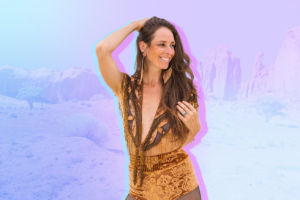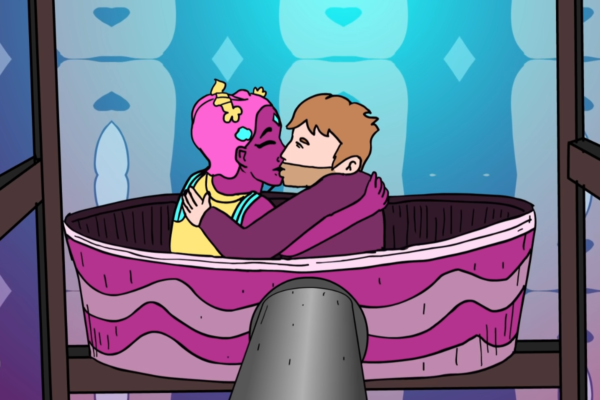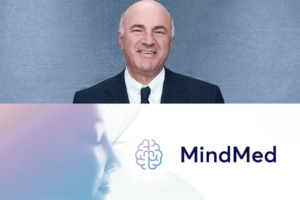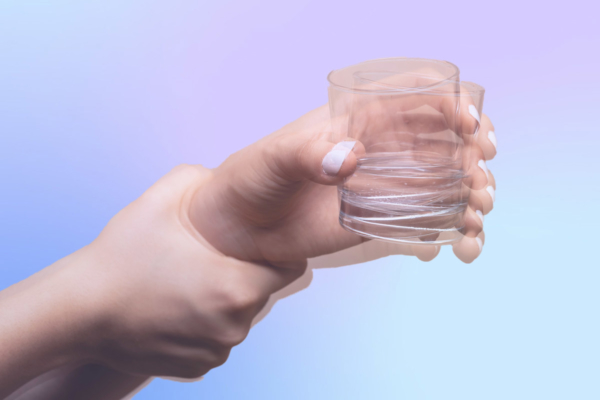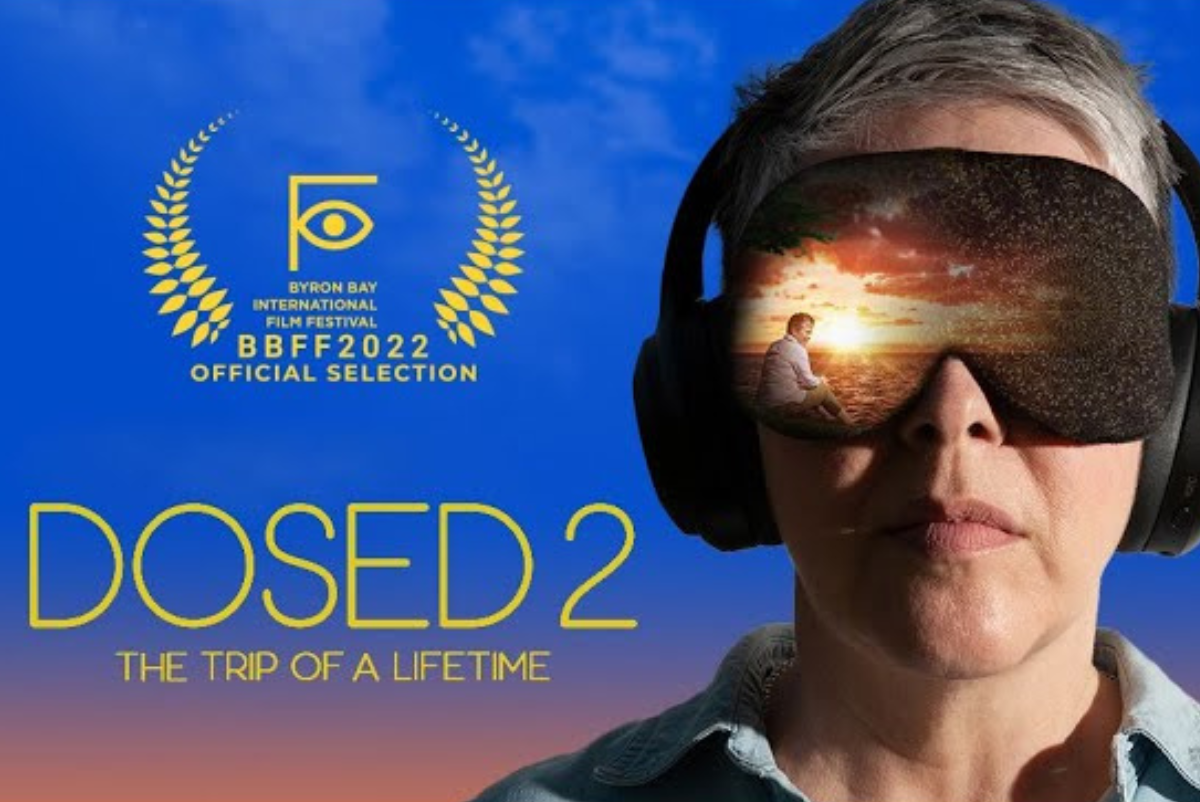
Dosed 2: The Trip of a Lifetime is a 2023 documentary, and second release from directors Tyler Chandler and Nicholas Meyers that focuses on how psychedelics have deeply transformed the lives of people undergoing hardships.
In Dosed 2, we follow the life of Laurie Brooks, a woman diagnosed with colon cancer that is granted the legal right for medical use of magic mushrooms. The documentary focuses on her battling her fear of leaving her family behind, how her family will fare without her, her fear of death, and coming to terms with her diagnosis with the help of a transformative psilocybin mushroom trip.
After a 3.0 gram psilocybin trip, Laurie is able to finally come to terms with her diagnosis and understand that her family will be okay without her. What follows thereafter is a transformational, and rather inspiring, experience as we see a woman fully come into herself and accept the good, the bad, and the ugly of life. Dosed 2 also shows Laurie undergoing a second, more potent 5.0 gram trip, after some developments in her diagnosis, as well as documents her journey in exploring possible alternative cures for her cancer in cannabis oil. But while the documentary handles the subject matter with the upmost care, respect, and empathy, it also has its handful of issues.
Where Does Dosed 2 Shine?
First, let’s discuss the good aspects of the documentary. Where Dosed 2 excels in the most is showing a firsthand, personal account of a psychedelic experience that helps destigmatize the use of mushrooms. It shows a woman without any prior experience with psychedelics, and who comes from a deeply religious background, be open to what these substances can show her. It was great seeing someone describe a psychedelic trip and verbalize in real time how it shifted her perspective on life.
The documentary does a good job at showing how a shroom trip can look like. In Laurie’s case, it was facilitated by guides as she laid down and got comfortable while listening to a soothing playlist and wearing an eye mask. It also shows Laurie preparing for her trip and discussing her intentions with her guide, as well as talking about her trip afterward and integrating it in her life. It handles the depiction of psychedelic use extremely well and responsibly. It also shows how the procurement of mushrooms looks like (at least in Canada) through psychedelic dispensaries. While this is definitely not the norm, it gives a glimpse of how psychedelic consumption could look like in the future if legislation allows for places where people can legally buy psychedelics.
The emotional growth that Laurie undergoes is also another great thing the documentary shows. We see a woman who was given a few short months to live, accept her cancer diagnosis and be able to grow closer with her family in the short time she was given. We see her verbalize and process to her family what her mushroom trips have helped her learn and in turn see how her whole family learns more about these substances and rallies behind her use of them.
Another thing that the documentary does well is tackling the taboo topic of death. In Western cultures, particularly in the United States, death is something that is often not talked about. Death makes many Western people uncomfortable, and the planning of it even more so. This documentary faces death head on and breaks down any walls of discomfort that surround it. It shines death in a kinder light – one that removes dread and anxiety from it and replaces it with understanding and acceptance. The inclusion of a First Nations tribe member’s explanation of what death means to them really helps the message come across too. In his message, he explains how, to them, death is only the start of a very long journey after our time in the physical, mortal realm. He explains how death isn’t seen as the end, but rather the start of a new existence, and talks about how loved ones remain in another realm, never truly leaving. Similar ideas of death can be found in other cultures throughout the world.
Continuing the topic of death, the documentary also touches on alternative burial methods. Laurie wishes to undergo a green burial after dying, which is the practice of burying a corpse in a state where it can be decomposed and return to the earth. This means that the body does not get embalmed or placed in a casket; the body is simply wrapped in a sheet and buried. The absence of embalming allows the body to decompose, and its nutrients then be able to return to the earth to aid life in new ways, such as by providing carbon and nitrogen to other living things. The American way of burial often consists of embalming someone, placing them in a coffin or casket, and burying them that way. But this doesn’t allow for the decomposing of the body. It keeps the body in a state of stasis, which, when we really think about it, is quite morbid and, dare I say, disrespectful?
Where Does Dosed 2 Fall Short?
Now, the things that the documentary does not do very well. My main issue with Dosed 2 is that it falls victim to what most psychedelic media does: show how psychedelics can change the life of people without really diving deep into the science behind it or try to fully demystify them. While the documentary handles showing the psychedelic experience in a good, digestible way, it lacks in providing a proper scientific foundation that can serve in complement. It keeps psychedelics in a space of nebulous spirituality. Paul Stamets makes an appearance and talks briefly about the way psychedelics can cause neurogenesis, but I wish this would have been expanded upon, as it was one of the more interesting things.
As a scientist, I understand that it can be hard to explain high-level scientific concepts to a general audience, but this helps people understand these drugs better and more psychedelic media should aim to do this. It bridges the gap between science and the general populace and helps ground the use of psychedelics for people who may be skeptical about their benefits. We can have a merge of anecdotes with scientific evidence.
The need for scientific sources was definitely needed when the documentary then shifts focus from mushrooms to cannabis oil in the third act of the film. Laurie receives news that her cancer has spread and has now developed breast cancer. With her realizing that further chemotherapeutic treatments could make her situation worse, or undergoing a surgery could leave her with a lesser quality of life, she decides to turn to alternative medicines to possibly cure her cancer.
The documentary posits the theory that the cannabis oil may have in fact sent her cancer into remission, but it does not provide any science to back this up. Yes, we clearly see that Laurie went into remission, but it seems remiss to mention any sort of clinical studies regarding the use of cannabis oil for the treatment of cancer. Dr. Robert Sealy mentions that there have been promising studies done on mice, and talks about cell death (apoptosis), but the manner in which he says it seems like he is not even sure, as he says, and I paraphrase, “it showed to work on mice, so how different could we be?” This comment made me raise an eyebrow because murine studies are not always reliable predictors of how a drug will act in humans. This inclusion in the documentary felt as the director’s way of addressing the medical research and promise of cannabis oil, but it was, honestly, not enough. Positing grand claims that drugs like cannabis could possibly cure cancer require proper research. There is research on this, so why not discuss more about it?
For a documentary tackling a medical topic, it does not provide the viewer with much science. Why not give sources at the end of the documentary where viewers can go to learn more? When I went to the documentary’s website, there is a resources section that links viewers to sites like NCBI and MAPS’ research hub, but it does not provide any specific sources detailing research that could expand on points talked about in the film. There are various, quite popular, papers detailing how psychedelics have been used in treating anxiety in patients with terminal cancer, so it just feels remiss to exclude mentions of that. The same thing goes for cannabis oil. I may sound like a skeptic, but my background is in the science behind these drugs. There is so much research surrounding various facets of psychedelics, that to not include it feels like the documentary is incomplete. I need psychedelic media to do better at highlighting the science.
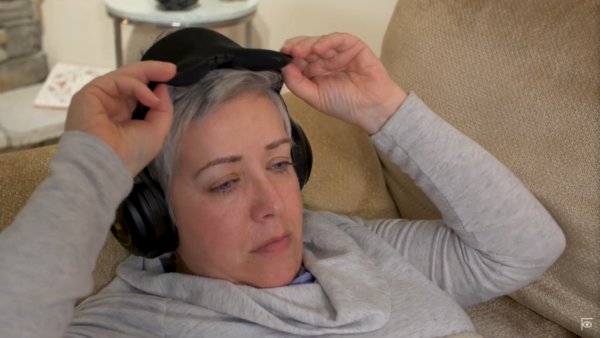
Moving on to another critique: were the people in the movie advised by producers on what to say? The way they bring up certain topics feels so clunky and forced that I kept wondering, “do people actually talk like this?” Every sort of explanation surrounding psychedelics felt so shoehorned in rather than it be let to flow naturally into conversations. For example, after Laurie’s first trip, her daughter mentions how Laurie did not become addicted to mushrooms. Then continues to emphasize that the mushrooms were not addictive, and they didn’t make her want to try other drugs. That felt like something that was written specifically for the viewer to understand the non-addictive nature of shrooms. It came across incredibly rehearsed, which then feels rather insincere. This same phenomenon happens multiple times throughout the documentary where someone says something that feels like it was fed to them to say. Some other examples are when the mention of bruising is brought up that show that the mushrooms have psilocybin in it, and then it gets brought up again as Laurie explains it to her own mom. It just feels like the movie grabs my head and says, “Are you listening? Listen to this! Pay attention!”
Lastly, I think the documentary needed some sort of connection between the directors and their project. I believe documentaries excel whenever they showcase their subject matter in an interesting, unique way – whether it be through framing, lighting, filmmaking techniques, style, etc. The documentary lacked this. The documentary is not elevating the artform or providing a subject in any groundbreaking ways, which I really would wish more documentaries did. Give us your unique approach to storytelling. The documentary just felt a bit formulaic and lacks direction. Not even going to mention that confusing third act detour discussing cannabis oil again. I want my documentaries to present something new to me. Even if I already know the subject, present it in an interesting way. This did not do that. It felt like a documentary that could have aired at night on the Discovery Channel. It felt like something I could show my mom, so she could learn more about psychedelics, but not something I would want to show my friends simply because it’s not a very engaging documentary, in my opinion.
Closing Thoughts
Overall, Dosed: The Trip of a Lifetime is an informative look at a woman’s journey into using psychedelics to confront her cancer diagnosis, but it falls short of providing something new to the world of psychedelia. The documentary lacks cohesion in its story and takes a strange detour in the third act toward alternative medicine and cannabis oil that posits claims that need to be backed up by science. While a step in the right direction, Dosed 2 needed to develop on its ideas a little more to be able to find a unique storytelling angle aided by its directors. For anyone not familiar with psychedelics, this can be a good introduction, but for those who are more well informed on them, this does not present anything new in content nor in style.
Final verdict: 6.4/10
You can watch Dose: The Trip of a Lifetime on https://www.dosedmovie.com/
